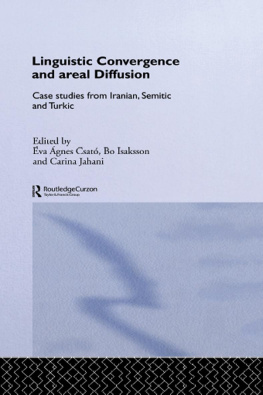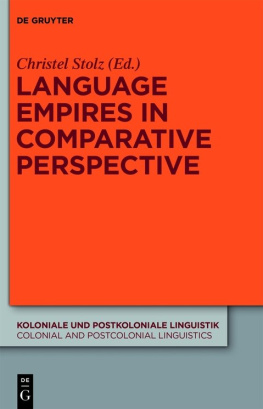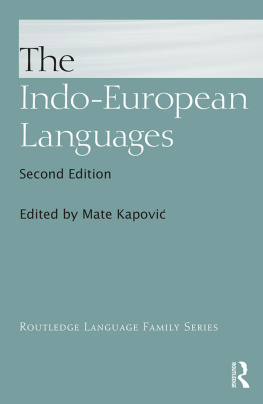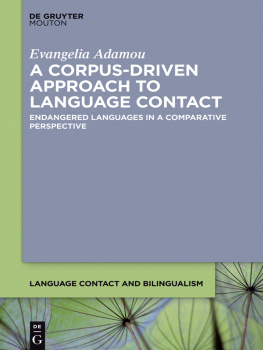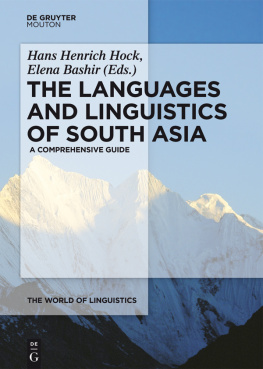Linguistic Convergence and
Areal Diffusion
In recent years contact linguistics has been given a particular emphasis in linguistic studies. This volume in the field of Iranian, Semitic and Turkic contact linguistics is the first of its kind, providing a summary of new results in this dynamic field of research.
Chapters by outstanding scholars present new data collected in fieldwork across the geographic area of Western and Central Asia where Iranian, Semitic and Turkic languages have entered into many different types of contact. Contributions focus on the study of language varieties spoken in convergence areas in which speakers are multilingual in languages of at least two but sometimes all three language families. The intricate linguistic contact situations discussed here demonstrate highly interesting convergence phenomena.
Articles show how the large standard languages and their varieties have converged with members of other large language families. Some authors analyse contact situations between Iranian and Turkic varieties spoken in Iran, Turkey and Central Asia and the influence of Standard Arabic on the languages of the area. Others present new data on, for example, contact induced changes in Arabic dialects spoken in contact with dominating Turkic varieties in Southern Anatolia and Central Asia and on convergence between dialects of the same language family.
va gnes Csat is Professor of Turkic Languages at Uppsala University. Her main research interests are general and comparative linguistic Turcology, language typology and descriptions of lesser-studied Turkic varieties.
Bo Isaksson is Professor of Semitic Languages at Uppsala University. His research interests include Arabic dialects, comparative Semitic studies and the verbal aspect in Classical Hebrew.
Carina Jahani is Associate Professor on Iranian languages at Uppsala University. Her main areas of research are the Balochi language and its literature, Modern and Classical Persian grammar and sociolinguistics in Iran.
Transferred to Digital Printing 2005
First published 2005
by Routledge Curzon
2 Park Square, Milton Park, Abingdon, Oxfordshire, OX 14 4RN
Simultaneously published in the USA and Canada
by Routledge Curzon
29 West 35th Street, New York NY 10001
Routledge Curzon is a part of the Taylor & Francis Group
2005 Editorial matter and selection, va gnes Csat, Bo Isaksson and Carina Jahani; individual chapters, the contributors
Typeset by Textgruppen i Uppsala AB, Sweden
All rights reserved. No part of this book may be reprinted or reproduced or utilized in any form or by any electronic, mechanical, or other means, now known or hereafter invented, including photocopying and recording, or in any information storage or retrieval system, without permission in writing from the publishers.
British Library Cataloguing in Publication Data
A catalogue record for this book is available from the British Library
Library of Congress Cataloging in Publication Data
A catalog record for this book has been requested
ISBN 0-415-30804-6
List of Contributors
Hendrik Boeschoten, Department of Oriental Studies, Mainz University, Germany. <>
Bernt Brendemoen, Department of East-European and Oriental Studies, Oslo University, Norway. <>
Christiane Bulut, Department of Oriental Studies, Mainz University, Germany. <>
Guram Chikovani, Tbilisi Institute of Asia and Africa, Georgia. TIAA <>
va gnes Csat, Department of Asian and African Languages, Uppsala University, Sweden. <>
Sven-Olof Dahlgren, Department of Oriental and African Languages, Gteborg University, Sweden. <>
Bruce Ingham, School of Oriental and African Studies, University of London, Great Britain. <>
Bo Isaksson, Department of Asian and African Languages, Uppsala University, Sweden. <>
Carina Jahani, Department of Asian and African Languages, Uppsala University, Sweden. <>
Otto Jastrow, Institute for Non-European Languages and Cultures, Chair of Oriental Studies, Friedrich-Alexander University Erlangen-Nrnberg, Germany. <>
Lars Johanson, Department of Oriental Studies, Mainz University, Germany. <>
Filiz Kiral, Department of Oriental Studies, Mainz University, Germany. <>
Mark Kirchner, Institute of Oriental Studies, Giessen University, Germany. <>
Geoffrey Lewis, St Antony's College, Oxford University, Great Britain. <>
Abdulaziz Y. Lodhi, Department of Asian and African Languages, Uppsala University, Sweden. <>
John Perry, Department of Near Eastern Languages and Civilizations, The University of Chicago, U.S.A. <>
Stephan Prochzka, Institute for Oriental Studies, University of Vienna, Austria. <>
Robert R. Ratcliffe, South and West Asian Studies, Tokyo University of Foreign Studies, Japan. <>
Claudia Rmer, Institute for Oriental Studies, University of Vienna, Austria. <>
Heidi Stein, Department of Oriental Studies, Mainz University, Germany. <>
Donald L. Stilo, Max Planck Institute of Evolutionary Anthropology, Leipzig, Germany. <>
Jan-Olof Svantesson, Department of Linguistics and Phonetics, Lund University, Sweden. <>
Bo Utas, Department of Asian and African Languages, Uppsala University, Sweden. <>
Gemot L. Windfuhr, Department of Near Eastern Studies, The University of Michigan, U.S.A. <>
Preface
Contact linguistics has been given particular emphasis in linguistic studies of the last decades. Scholars in the fields of Iranian, Semitic and Turkic linguistics have recently made important contributions to this line of research. As is well known, varieties of Iranian, Semitic and Turkic have, in the course of their history, entered into different kinds of linguistic contact, inducing, in various periods and settings, changes in varieties they have been in contact with and undergoing changes themselves.
The present volume gives a first summary of the results in this dynamic field of research, in which scholars increasingly engage in interdisciplinary projects in order to gain. new insights into the outcome of contacts between languages of the three language families. The content focuses on varieties spoken in overlapping and adjacent geographic areas, mainly in Western and Central Asia, in particular convergence areas with bi- or multilingual speakers. Many of the authors present new data collected in fieldwork.
The papers are partly based on contributions to a conference convened at Uppsala University, Department of Asian and African Languages, 1820 May 2001, by va . Csat and Bo Isaksson: Areas of Iranian-Semitic-Turkic Convergence. Linguistic Contact in Western and Central Asia in Past and Present.
The conference and the publication of this volume have been financed by the Swedish Research Council for the Humanities and Social Sciences

